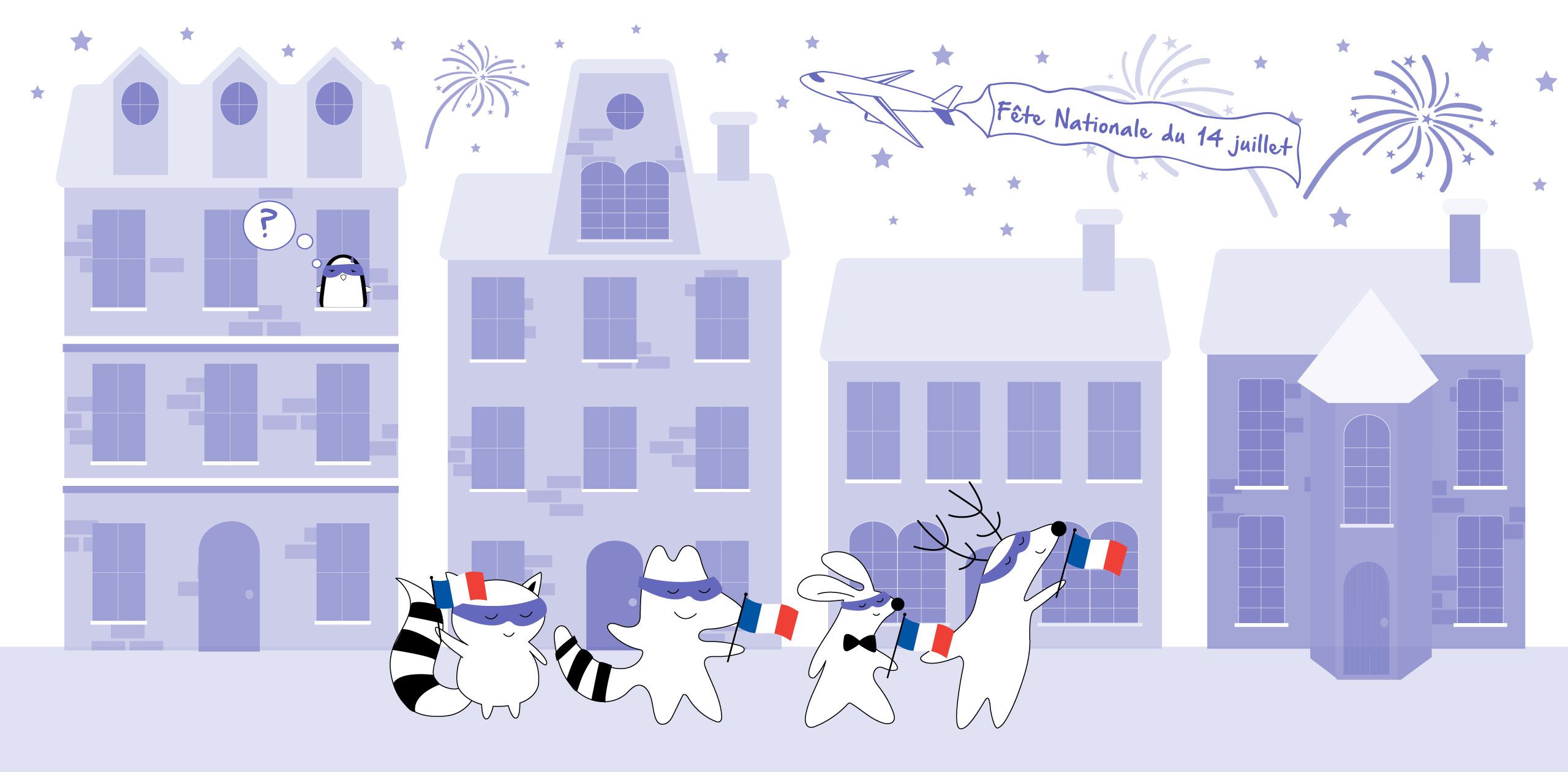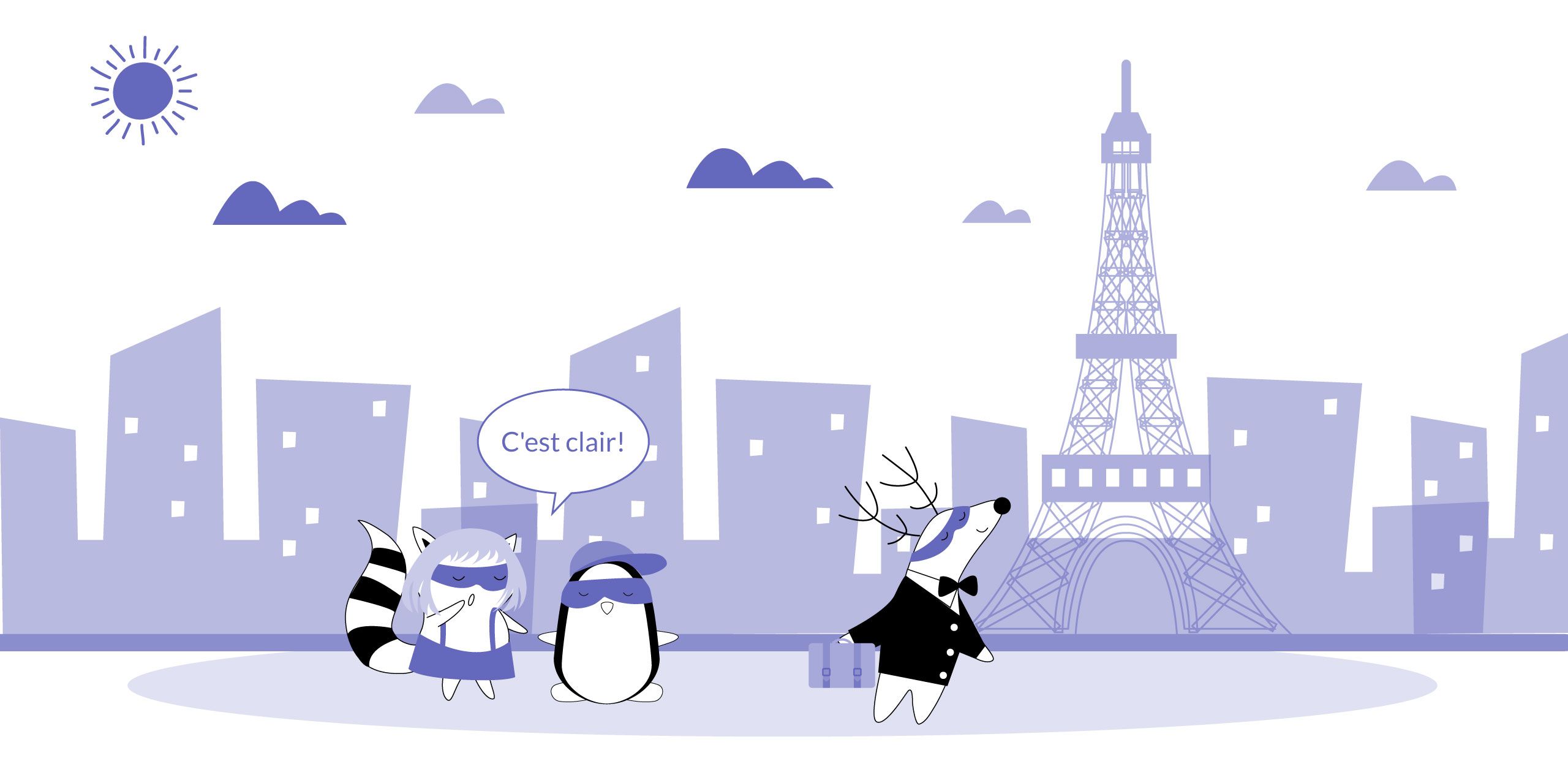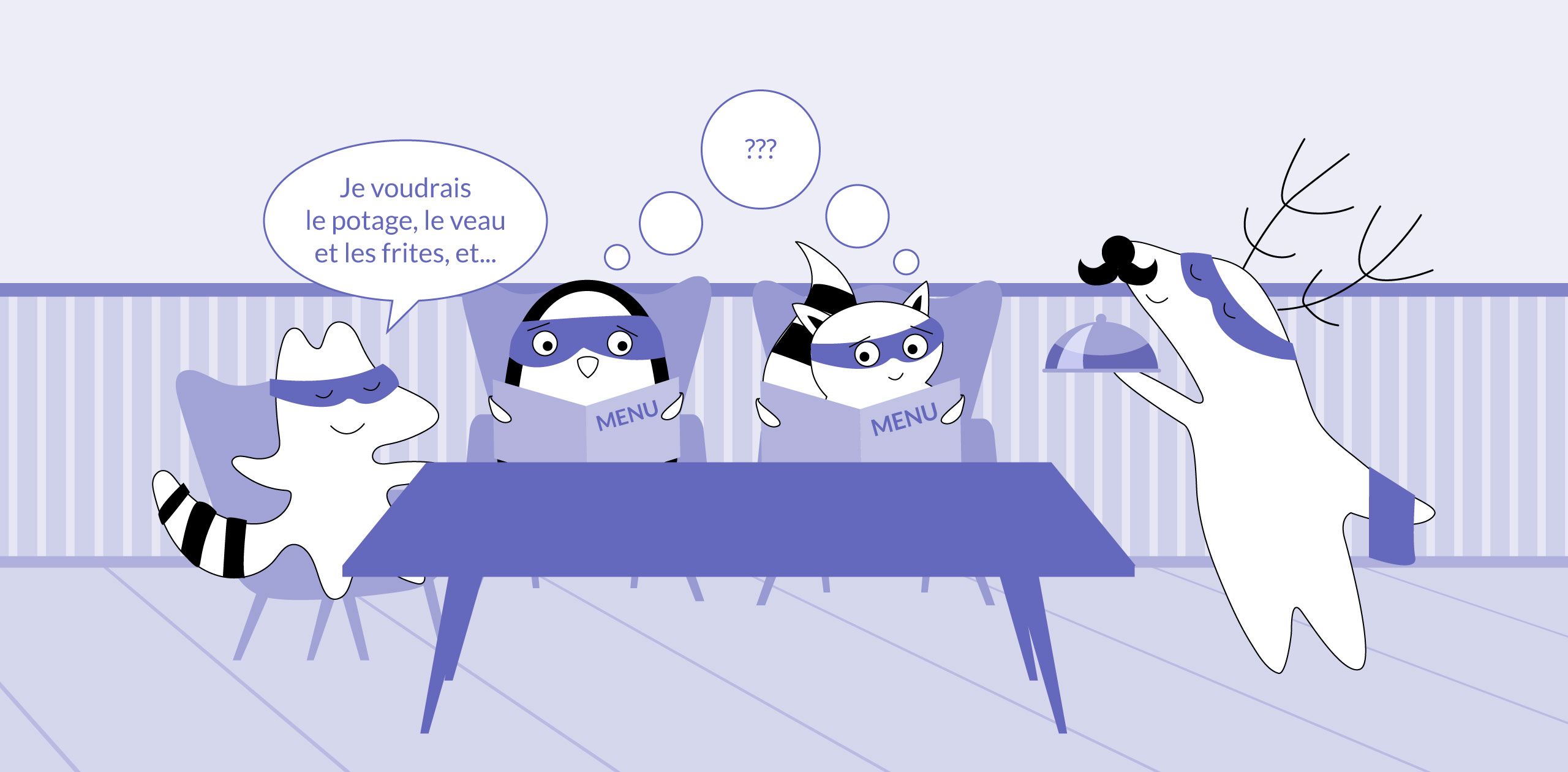
Let's start with an unspoken truth: it is highly unlikely that you will learn a language in only 7 days. It is also highly unlikely that a single app or book will bring you fluency.
Learning a language requires persistence and a mix of methods that work out only for you. The language learning process cannot be standardized.
Learning languages with stories has recently triggered a change of thinking within the entire language learning industry. It may be one of many available methods, but as you are reading this, thousands of language students are getting tired of dusty, standard textbooks and one-course-fits-all classroom apps right this moment.
Today, let us tackle the topic of (1) the shift towards language learning with stories, (2) the science behind it, and (3) how to get started if you’re curious about learning with stories. Read on - and decide whether you want to give this method a shot.
Bullet Points:
Here is what we will talk about in this article:
- Storytelling is the oldest and most natural way of learning and communication that is widely used today;
- Stories trigger a natural learning process;
- By learning with stories, you stay motivated due to real-life contexts and personal relevance;
- Storytelling makes our brains work more effectively;
- Stories boost our long-term memory and activate emotions that impact the process;
- To make the language learning with stories the most effective, you can implement several tips, such as choosing the right materials, practicing regularly, and many more.
1. Why Language Learning With Stories Makes a Difference
There are many reasons why people decide to learn languages through stories: because it is more fun, because they want to make sense of their loosely connected vocabulary, or simply because they are bored of textbooks and want to try something new and potentially more effective. But that is just a piece of the puzzle.
In reality, learning with stories is not just an engaging activity. It is a time-honored method that has been used to teach humanity everything we know. From early humans painting stories in caves to the invention of books, storytelling shapes our history. The Bible tells a story; tales of emperors and conquerors are honored on paper. Old tales told beneath the fireplace became history lessons in school, and classical plays find new interpretations in the modern theaters, cinemas, and on the stages.
Nevertheless, the quality and aim persisted - they still are there to teach us and help us discover the surrounding world.
For a moment, let’s dive into the history of storytelling to see why it is so important for humanity in the first place.
1.1 Storytelling as the Oldest Form of Communication
Since ancient times, storytelling has been present in the form of oral storytelling traditions that predate the written word and press. Older people passed stories to the younger generations, talking about history, explaining natural phenomena, entertaining people, sharing customs and traditions, and passing on their faith.
These stories were preserved in peoples’ memories and then were passed on again and again. Later on, storytellers started traveling around the world, learning various regions’ stories while also gathering news to bring back with them.
It is thanks to them that today that we know various tales and have such deep knowledge of the surrounding world.
But preserving information about the word and entertainment of the public was not the only purpose of storytelling. It has also been used in various religions around the world. After all, all major religions rely on stories, or, to be precise, “holy scriptures,” which are the continuations of oral traditions.
This type of storytelling is called narrative theology, and it helps support, explain, or justify a particular belief system's rituals, theology, and ethics. The resulting shared believes led to an effective and sustaining cooperation between a large number of humans in times where no independent legal system or formal laws existed.
1.2 Storytelling As a Method of Modern Learning
Today, storytelling as a form of learning is used in various spheres, such as law, theology, and even medicine. It’s not just about the entertainment (and it never was) - instead, it works more as a context for learning, creating new ideas, and theorizing new applications for already existing patterns.
Where can you come across this serious storytelling? Here are just a few ideas based on an article entitled Serious Storytelling – A First Definition And Review by Artur Lugmayr, Erkki Sutinen, Jarkko Suhonen, and others. Serious storytelling can appear in:
- High-quality journalistic content
- Serious (persuasive) computer games
- Narrative medicine that incorporates the whole life story of patients into the treatment plan
- Psychological intervention and treatments based on the potential scenarios of feared situations
- Education, including:
- Case studies for studying business, law, medicine, and various other subjects
- E-learning where users learn via role-play
- Teaching approaches that allow learners to “express their learning experiences, including emotions, within the overall context of their lives, as a story.”
- Simulations and virtual training
Apart from those, today’s storytelling is also widely used in marketing, blogging, and even politics where personal narratives can compel readers and listeners to take a desired action.
And, of course, literature is the most natural format that uses storytelling all the time; we can see a powerful narrative in many works, from fantasy and science fiction, to non-fiction and self-help books.
Whether you’re reading Harry Potter or The Subtle Art of Not Giving a F*ck, it’s the storytelling narrative that keeps you engaged, reading more, thinking about the information you’ve received, trying to figure out what’s going to happen next, and drawing conclusions.
Moreover, it is thanks to the literature that we learn from a young age - it helps us acquire new words, speak more fluently in our native languages, and discover the world around us.
1.3 Stories Trigger A Natural Learning Process
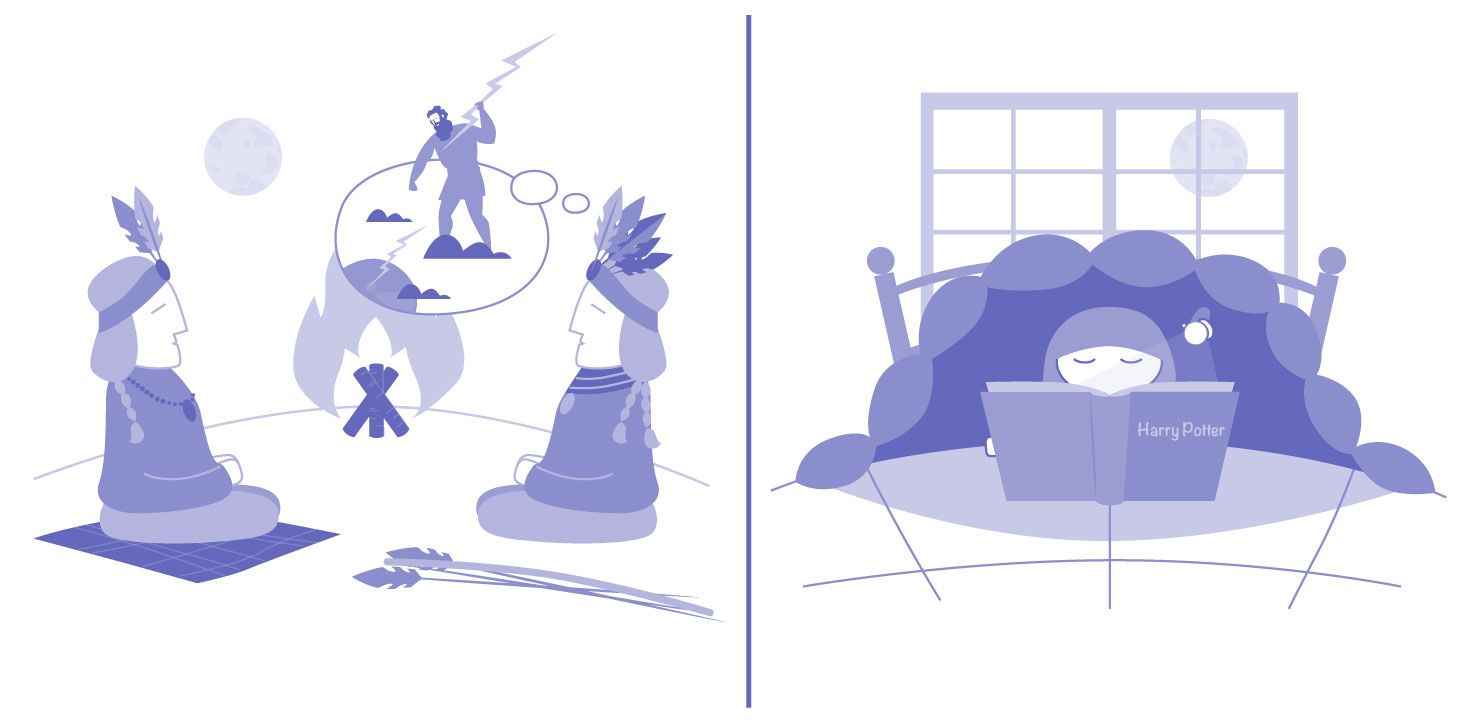
Storytelling is the first and most natural method that our parents and school teachers used to tell us more about the surrounding world and ourselves.
Bedtime stories, children’s books, novels at school - the authoritative figures in our lives utilized these and other various storytelling resources to teach us about morals, beliefs, perspective, feelings, emotions, and behavior.
For example, remember the smashing success of Harry Potter? It might seem like just a fun story, but it also has taught us to value friendship, courage, personal differences, and fairness. And that’s not just speculation - there are studies suggesting that children who read J.K. Rowling’s famous book series grew up to be better people.
Just like traditional storytelling, the Harry Potter series uses metaphors, irony, and other literary techniques to talk about the real world that still has its share of racism, discrimination, dirty politics, and other unpleasant and potentially unpleasant issues.
Today, even very young children can grasp these complex ideas through literature, which they can develop more detailed opinions about when they’re older. We instill traits like justice, fairness, or tolerance into them in early childhood - and this is exactly what storytelling has been doing since the beginning of time.
Books and storytelling are also a way for children to learn languages - first of all, their native language. They learn new vocabulary in easy-to-understand contexts, and when they come across difficult words, they can go to their parents for the definition.
Reading stories doesn’t only teach us important lessons on being a human - it also helps us become natives in our first language.
With all that being said, we simply can’t ignore the fact that storytelling is one of the most effective methods for teaching and learning. No wonder that today, more and more people are switching to it as a way to learn foreign languages.
2. How Does Learning With Stories Work?
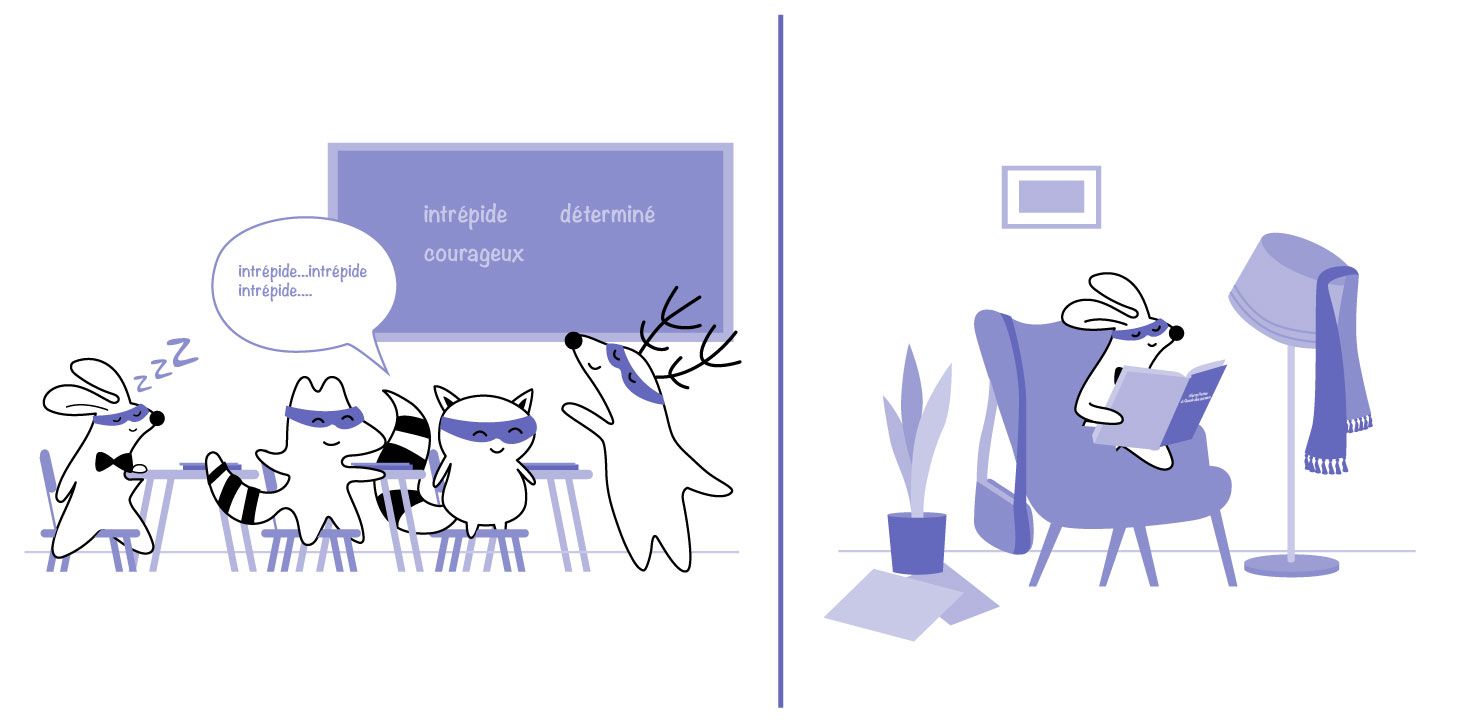
But what is there about stories that makes them work in comparison to other traditional methods?
After all, you might know that something traditional could be very boring. A fair number of students would think of school lessons or memorizing new words or phrases by heart. However, the process of learning foreign languages with stories is far from that. It is engaging, interesting, and much more motivating than the traditional desk-and-textbook method.
But how does that work exactly? Why do we fall asleep trying to listen to the teacher repeating a vocabulary word for the tenth time or forget everything that’s written on the blackboard; and at the same time read something new and exciting and remember that for the rest of our lives?
Let’s take a look at the most important ways of how and why learning - and especially language learning - through stories can be both effective and enjoyable.
2.1 You Avoid One-Size-Fits-All Textbooks and Stay Motivated
First things first - with stories, we get the structure and connectivity of events that help us avoid boredom and stay motivated to continue reading or listening.
A good story - whether used to learn foreign languages or just fill your free time with - should be engaging and interesting. These factors make your brain less prone to distraction. You get curious, and you keep on reading.
This rarely happens in schools or universities. Instead, a fair number of students get a standardized read as homework, and it doesn’t necessarily speak to them personally. They check it just to get it over with, or look for the short summary online, or ask a friend who read the task to tell them about it. And then, they forget about it as soon as they’re over with this topic in class.
On the other hand, when you come across an interesting story, it can be hard to stop at some point. You get involved, and you want to understand it fully. This also can happen with reading stories in a language that you are learning. If you see any new words, you would like to know their meaning simply because this will allow you to understand what’s going on in more detail.
Curiosity and relevance are important traits that keep us learning, whether it comes to languages, business, or basic school education. However, as we will discuss further, it’s also an important factor that, according to experimental psychology and cognitive neuroscience, can help us learn even more effectively.
2.2 Personal Relevance Makes the Story More Interesting
Quite a few things are necessary to make a story interesting. Maybe you’re driven by an engaging plot, maybe you get invested in lovable characters, or perhaps you’ll keep reading to find a solution to all your problems. Yet, one thing that often stops us from closing the books or whatever device we’re using is a story that is somehow important to us personally.
Stories that are used for language learning are not just passages from famous books. They are often picked up just because they seem fun or have an appropriate grammar structure to learn. But they offer much more than that.
An effective language story should tell you something exciting about the topic you’re interested in. Maybe you’re excited because the story is related to the happenings from the area you live in, or is about a topic you take interest in.
Personal context is what makes good language stories more interesting and memorable for language learners - and this is what keeps the motivation up to learn new words, understand the grammar behind the story, and overall stay involved.
Moreover, when you’re reading interesting stories, you’re feeling positive and sometimes negative emotions that significantly boost the learning process. Emotions are also extremely important for your memory to work better - this is something that we will cover further in the article.
And when it comes to grammar rules, the solution is simple - the teachers (or other people responsible for helping you learn) can simply adapt the story to your current level. This is what we do very well at Langster - we create an entire library of stories for you and then appropriate them to your current knowledge of the language.
2.3 You Learn Foreign Languages In Real-Life Contexts
This is another important feature that can make the process of learning a foreign language much more quick and efficient. And, unfortunately, this is something many people who teach foreign languages often forget.
More often than not, in language classrooms, we often come across fictional stories and plots in school textbooks - and while that can be indeed interesting for language learners, it won’t always work most efficiently to help them learn useful real-life vocabulary.
As a language learner, you might have noticed that - school textbooks can often make you read sentences like “A lion ate an ape.” Unlike the textbook examples, stories appropriate for language learning should be taken from real-life contexts that are closer to you and can help you remember new vocabulary better.
This is a great approach in language education that will aid you in making international friends, constructing proper sentences and even help you think in the foreign language you want to master. It’s a lot more effective than grammar drills.
2.4 You Get Deeper Into the Language
With language stories, you don’t just get a bunch of random vocabulary words in a new language or a set of rules with each story. You learn new phrases, get familiar with slang, see the way native speakers play with their language, and, finally, understand the rules and the inner logic of the language better.
Children acquire languages in a similar way - they are immersed in their language from the very beginning, and they don’t just work on their language skills. Instead, they are listening and using this new language in a way that is modeled to them completely with its peculiarities, unusual grammar structures, speaking patterns, and accents.
And while you don’t get to experience all that - your brain might not be used to such a deep immersion at this point - you do get to feel closer to the language you’re learning.
The only difference between the short stories and natural language acquisition is that you are not thrown into the deep end right from the start. And the teacher or story creators are trying to help you learn to swim in this sea full of new vocabulary and grammar rules, gradually introducing foreign words and showing you different grammatical structures.
2.5 Stories Work for Different Types of Learners
People don’t learn in the same way. Some people need a visual aid, and others require to put new skills to action or have a mental connection with it, while for others, it’s enough to hear something new.
Storytelling offers something for everyone - mental pictures that create memories for visual learners, the storyteller's voice and pronunciation for audio learners, and feelings from the story for kinesthetic learners. It can help all of these types to get hooked regardless of the learning style.
3. The Science Behind the Storytelling

The reasons mentioned above do seem to explain why short stories aid the language learning process so much. However, there’s even more to the process than just motivation, interest, real contexts, or various aspects helping different types of learners. Our brain is involved to bring it all together - and to a much greater scale than we can imagine.
Now that we look at all the benefits of storytelling, another question arises: Why does it feel so good to learn with short stories compared to the other language learning methods?
Science holds the answers to this question. Neuroscience, to be precise.
As you are aware, the human brain is a delicate structure that manages everything we do and say. Different parts of our brain are responsible for the way we speak, move and act. Moreover, different areas of the brain can have a significant impact on the way we remember things. And recall is important in the language learning process.
3.1 How Our Brains Work
Our brains send various chemical and electrical signals throughout the body. These signals control different processes in your body, and your brain interprets everything that is happening at any given moment of time.
Some messages are kept within the brain, for example, your memory. When you need to remember something you’ve learned at some point, or do an action that you’ve done before (for example, riding a bike) your brain sends a signal to the area where the memory related to this action is located and retrieves it.
3.1.1 How Language Learning Works Usually
Language learning is such a complex process because it requires different areas of the brain to cooperate.
When we are learning a foreign language, there is a continuous information exchange between different areas of our brains. This happens because learning a new language entails many small elements, such as speaking, listening, understanding, memorizing, and so on.
Science identified special areas in our brain responsible for language learning called Broca’s area and Wernicke’s area. Our native language is stored mainly in these areas, and it is thanks to these two that we can understand what people tell us or acquire new languages.
The Broca’s area, located in the left frontal lobe, is responsible for speech production and articulation - it’s the part that helps you construct sentences and pronounce words like a native speaker.
On the other hand, the Wernicke’s area, located in the left temporal lobe, is associated with language development and comprehension - which means its job is to help us understand people talking. We use Wernikce’s area when listening in a foreign language and acquiring new vocabulary.
As you might see, the traditional approaches to teaching foreign languages are focused mainly on acquiring the skills that the language-processing parts of our brain are responsible for. In school, we learn to construct sentences, pronounce foreign words, use new vocabulary, or communicate in foreign languages.
But this is often not enough. Not if we want to become fluent in a foreign language. After all, even communication in our native languages can be tricky sometimes.
To sum it up, both the Broca’s area and Wernicke’s area are responsible for most of the language processes in our life. When we talk to people in our native languages, these areas of our brain help us assess the information that we receive and understand what the other person is talking about.
Yet, there can be situations in which our brains process a situation differently than a large number of other individuals, which can lead to awkward situations.
For instance, you can create a presentation that seems perfectly logical to you - but for other people, it will completely lack meaning. Or, for example, the participants of the book club can all read the same book but interpret it differently.
This happens because Broca’s and Wernicke’s areas use the information we receive and translate it into a story form that will be meaningful and logical for us.
For example, someone presents a project in bullet points, and your brain connects these bullet points and creates a meaningful story out of them. But sometimes, this story will be completely different from the factual information we try to receive.
The same misinterpretation can occur if, when learning a new language, we rely completely on Broca’s and Wernicke’s areas and use traditional approaches with grammar drills, pronunciation exercises, and single flashcards for new words.
We learn a new language only in the context we get (for example, “a lion ate an ape”) and it can be hard to use the new information and new words in different contexts.
3.1.2 How Storytelling Changes the Language Learning Process
When storytelling comes into play - or, in our case, the language learning process using stories as a medium - our brain starts acting quite differently. Not only are the language processing areas activated, but also other relevant parts of our brain that facilitate learning: for example, the sensory cortex, responsible for our senses, or the motor cortex, which plays a part in the way we move.
This happens because we don’t just try to repeat information - we also experience the message, the story. This is what helps it to get deeper under our skin - and deeper into our brain. This is also one of many reasons why storytelling is much more interesting than classic textbook learning.
Another key thing here is, the more areas of our brain are active during a certain process, the better our memory works. And this is the most important factor when it comes to language learning.
3.2 Long-Term and Short-Term Memory
People have two types of memory: short-term and long-term. Short-term memory is used to store the information temporarily. It is also called the “working memory,” as we usually access and manipulate the information stored there quickly - for example when we’re trying to solve a math problem that we learned how to solve in the morning lesson.
Working memory is vulnerable. We tend to forget information as soon as we’ve used it.
Yet, working memory is something you can work on and improve. When learning languages, you can use mnemonic techniques such as flashcards to help organize the information in your short-term memory and add something new to it.
Long-term memory, on the other hand, stores information for a longer time and more effectively. When the hippocampus - the part of the brain responsible for long-term memory - retrieves information from the working memory, new connections are formed between neurons and synapses stay as long as they remain in use. Your long-term memories are basically inscribed in your brain.
Long-term memory is also a place where your language knowledge is stored when it’s finally acquired. It also becomes subconscious upon moving to long-term memory, which means you can use it without actively thinking about it. And this is what storytelling-based methods of language learning usually support best.
An easy example of how our memory works subconsciously would be a weekly shopping list.
You are highly likely to remember the list better if your birthday is coming up and the items are related to the party you want to throw. You are connecting these items with something historic and highly relevant to you and an event (your birthday) which in turn leads to more connected dots in your brain.
3.2.1 How Things Get Pushed into the Long-Term Memory
If we compare our brain to a computer, we can say that our short-term memory is the RAM, while long-term memory is the hard drive. The second one relies on physical presence - in our case, the brain matter.
To put memories from short-term into long-term memory, we need to create new physical connections and synapses between neurons in the brain. It works like adding things to the hard drive, except you can’t delete them - whether you’re using them or not, these connections will endure.
The hippocampus is the part of our brain responsible for this process. It links your memories together and decides what things are important (and will then be used more effectively) and less important (not well remembered).
3.2.2. How Storytelling Helps The Learning Process
Storytelling creates many links in your brain related to a certain event - in our case, diving into a story in a foreign language. Our brain basically encodes all the small elements related to this process into one new memory by creating new synapses.
You won’t only remember how a certain word is translated - you will also easily remember how it’s pronounced, in which context it was used, what you felt when you came across it, and how it is used in context in the foreign language you’re learning.
3.2.3. What You Can Do to Boost The Learning Process
One of the key things you can do to help the hippocampus to prioritize a certain memory is to repeat it consistently. In the case of language learning with stories, you can read them often, note new words, and get back to them in some time.
The spaced repetition method that Langster uses is perfect for that. It is based on repeating new vocabulary at increasing intervals until knowledge is fully embedded in long-term memory.
The spaced repetition method connects stories to vocabulary, which helps you easily recognize the words when you come across them once again. It also lets you read the sentence again where you encountered the particular word in the first place.
Lastly, adding relevance and an emotional component to the story will also impact your memory. This is so because we tend to remember more emotional or impactful events, which are usually recalled more often and with more clarity and detail.
An example will be climate change for many these days. If this topic feels important for you, you will more likely remember the vocabulary related to it better.
3.3 Neurochemicals that Impact Learning and Storytelling
As we’ve already established, storytelling activates emotions which help new information get deeper into the brain. The power of emotions is very strong; they can either compel us to the story or make us dislike it.
Moreover, emotions that we experience are strongly connected to certain chemicals in our brain. Those can significantly impact the learning process in a negative or a positive way. Let’s take a look at the way they work.
3.3.1 Dopamine
Dopamine is a neurotransmitter that makes you feel good. While it is widely associated with pleasure and reward, it’s more complex than that. Dopamine is a contributing factor for our decision-making, as well as our alertness, motivation, and focus, which are all important for the language learning process.
Dopamine is released when our brains experience reward - for example, food, sex, or even watching the ending of a binge-worthy TV show. Suspense and cliffhangers in the movies work based on dopamine, which makes you want to watch more.
When learning with storytelling, dopamine is helping you stay focused and alert till the very end of the story, enabling you to read and learn more.
3.3.2 Oxytocin
Oxytocin is often called the “love hormone” which increases the bond between the partners or between the mother and her children. However, it’s also a hormone that can make you calmer and more relaxed.
When you’re reading an interesting story and feel close to its character or author, this may also be because of oxytocin. This hormone gives you the best storytelling experience possible, helping you “relive” the plot of the story as you feel a personal attachment to it.
3.3.3 Endorphin
Another chemical responsible for positive emotions when reading the story is endorphin. It is what makes you love or feel more empathy towards the characters - and thus increases your sense of likeability of the story and your involvement in it.
Funny stories evoke positive and strong emotions thanks to boosting our endorphin levels. Imagine reading a humorous story in another language. The released endorphin is highly likely to support the learning process.
3.3.4 Cortisol and Adrenaline
Have you ever wondered why most language learning stories have positive topics? The reason is mainly that the effective story creators want to avoid the two negative hormones - cortisol and adrenaline.
These hormones can be produced as a cause of stressful content within the story - negative topics and plots, incorrectly chosen words, or anything else that can make you feel scared or uncomfortable. This can lead to irritability, lack of creativity or motivation, and impaired memory.
We choose our stories carefully, trying to find something that will boost your levels of positive hormones and not evoke cortisol or adrenaline. You can use the application being absolutely sure that here you will find only positive and engaging stories.
4. How to Make Language Learning With Stories Effective?
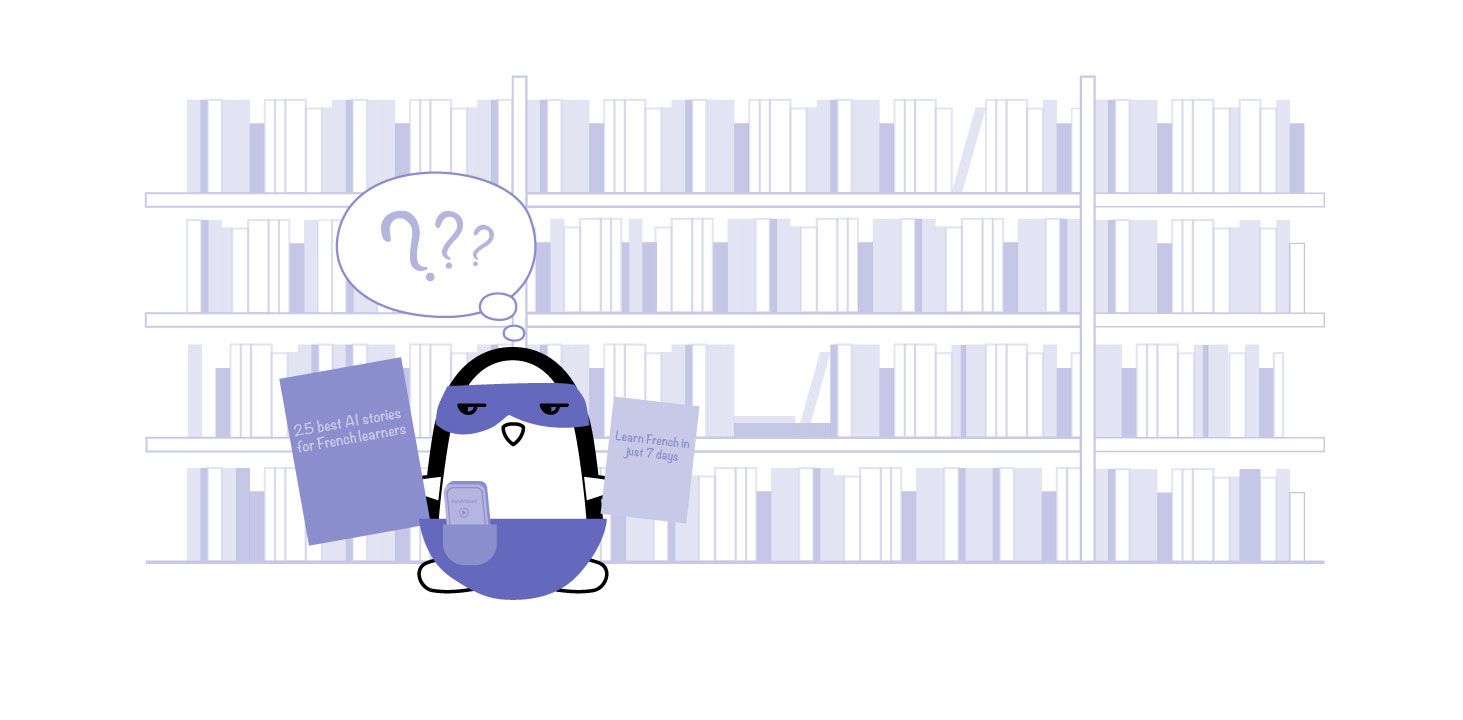
Of course, in order to learn a language, it is not enough to simply download an app or look for funny short stories in your target language online. There are several things you need to implement to make sure that you are fully using all those benefits of storytelling in language learning.
First, make sure to use different language-learning methods. We have covered this topic before, but here’s a short summary: mix up different ways to learn a language. Storytelling can do you good in terms of reading, listening, or boosting your vocabulary; but you still might need some additional help understanding the structure of your target language.
When you download the Langster app it makes sense to use it as a complement to a personal tutor or group courses to unfold the full potential of both methods.
Second, choose the right learning material for you. When subscribing to online platforms or apps, make sure to use the trial period and see whether they suit your needs. Read reviews online to make sure you don’t get ripped off.
And don’t always rely on materials that have worked for others - if a certain method is not working for you, try and experiment until you find the right fit.
Remember that the storytelling method is all about combining language education with good stories and enjoying them. If learning becomes a joyless and forced process, your hippocampus will automatically put less relevance to it and it will be difficult to maintain motivation.
Finally, read on and use our tips for learning with storytelling quickly and effectively.
4.1 Start at Your Individual Level
Reading stories in the language you’re learning can be very beneficial from many points that we have covered above. Nevertheless, it might be a little overwhelming if you’re a complete beginner. So when starting your journey with storytelling, consider structuring the language in your head.
Create a special notebook or a document on Notion, where you can write down important phrases or grammar points. Then, whenever you come across new rules, combinations of prepositions with nouns, idioms, tenses, or anything else that can give you a handle of the language structure - note them. This will help with the chaos that can occur at the beginning.
These notes will also be a great tool when you move to the higher learning levels. If you don’t like writing, why not use MIRO or any other platform for structuring digitally?
4.2 Reinforce the Knowledge
Just reading all the time may be enjoyable, but it still remains a complement to the learning process. For the knowledge to stay in your long-term memory, you have to create new neural connections in your brain - for example, by repeating what you’ve learned and reinforcing the knowledge.
Don’t just read the story - find some comprehension exercises related to it or create flashcards with the new words you’ve just learned. Get back to these cards from time to time and boost your memory by connecting them to the story.
4.3. Practice Regularly
Practice makes perfect - this might be just a common saying, but you know that it’s true. Regular exercising of a certain activity will help you stay good at it. Reading your very first story in a new language can be hard, as well as trying to use a certain grammar rule for the first time. But if you practice it regularly, it will become a learned skill with time.
Read one short story a day - this is the least you can do if you want the story method to be effective. It won’t even take much time - a few minutes to read the story, a few more to check the vocabulary, the grammar, and a few more to fill the quiz or create the flashcards. That’s it - simplicity, engagement, and regularity.
5. Conclusion
Learning new languages with stories is one of the most effective and enjoyable methods to make your brain work efficiently while achieving your learning goals with pleasure. No grammar drills, no boring textbooks, no out-of-this-world contexts - just you and stories that interest you.
Are you willing to give it a try? Just remember - learning with storytelling is all about enjoying what you’re reading, so find stories that appeal to you and start at your level. It’s ok to skip over something that makes you bored or frustrated.
The Langster app covers stories appropriated to the level and interests of the learner. Here, you can find information on various topics, including science, traveling, people, and much more - each one with audio created by native speakers, a short grammar explanation, and a quiz to check your comprehension.
Give it a try and see if learning with stories can help you pave your way towards mastering a new language.







